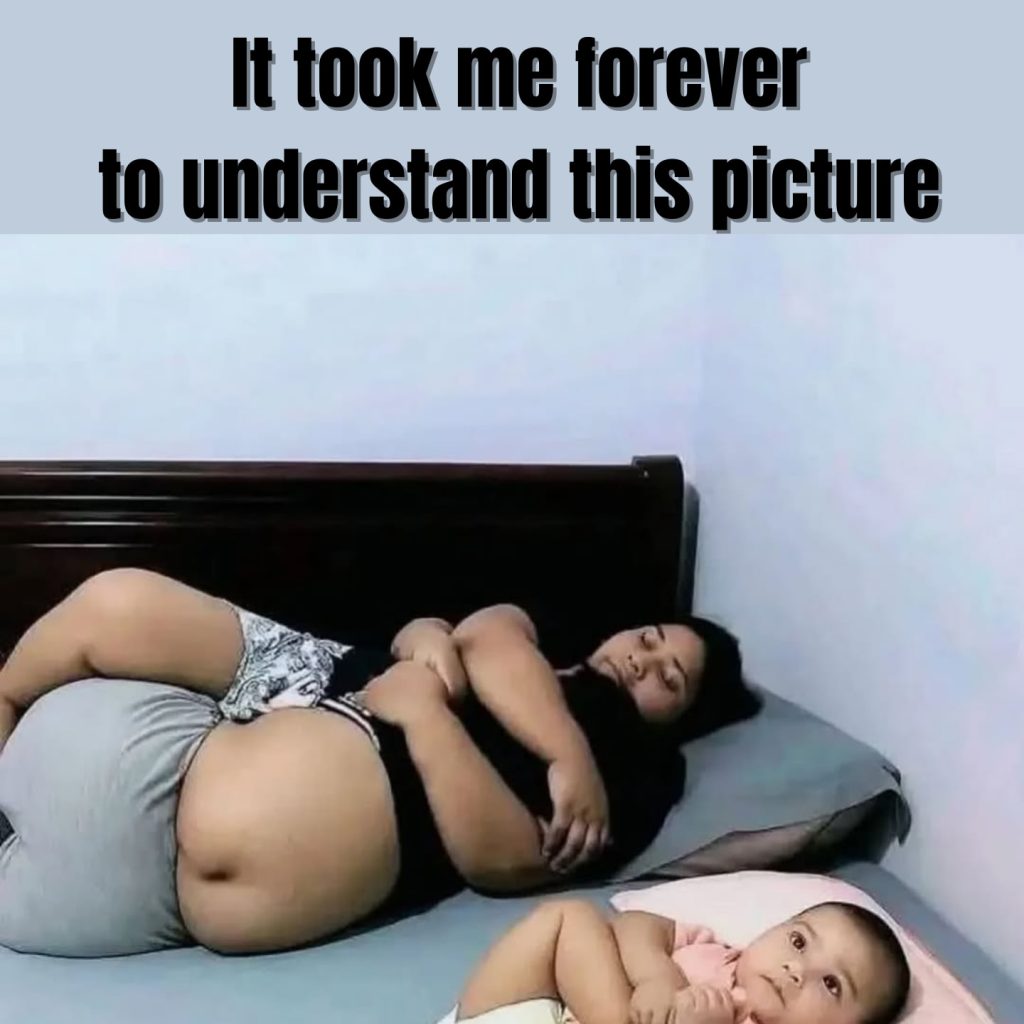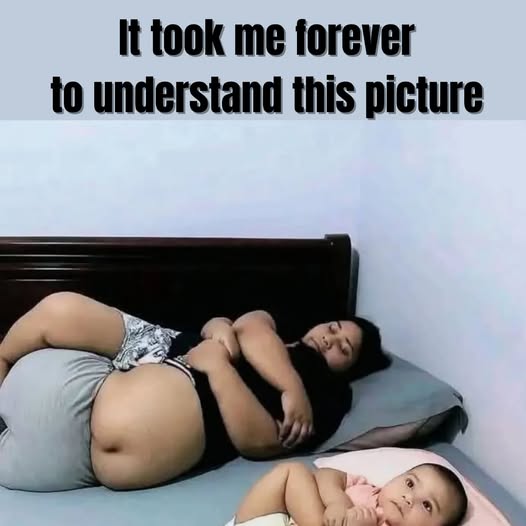Try the challenge before you scroll. Look at the photo for three seconds. No zooming, no overthinking—just your first impression. Most people blurt out something like, “Whoa, that’s a huge person on the left and a tiny baby on the right!” If that was your instant take, you’re in very good company. This is one of those perspective traps that turns an ordinary family moment into a mind-bending riddle.
Why this picture breaks your brain (and why that’s totally normal)
Our visual system is brilliant at taking shortcuts. In real life, that keeps us moving—your brain doesn’t analyze every chair to know it’s safe to sit. But in photos, those shortcuts can fool you. This image hits three classic traps at once:

- Forced perspective: Objects closer to the camera look huge; anything slightly farther away shrinks. Your brain flattens the scene and assumes everything lies on one plane.
- Shape bias: A big rounded gray shape plus a small “dimple” strongly suggests a belly. Once your brain settles on “stomach,” it ignores contradictory clues.
- Missing context: Tight cropping hides the rest of the bed, the room edges, and the photographer’s angle. With the usual size cues removed, your mind grabs the easiest story—even if it’s wrong.
Common mistakes people make when solving this riddle
- Taking the baby as the size reference. Because the baby lies closer to the camera on a separate pillow, using the baby’s head to “measure” the adult creates fake gigantism.
- Mistaking fabric for skin. That smooth gray curve looks like a bare abdomen until you spot the seams and folds: it’s clothing, not skin.
- Assuming one flat surface. The headboard and mattress lines look parallel, so your brain thinks everyone is lined up evenly, even though the subjects sit on different depth planes.
- Stopping at the first explanation. Once you think “giant person,” you stop hunting for evidence that doesn’t fit—like the waistband, the leg opening, or the lighting falloff on the fabric.
Video : Only the Most Attentive 4% Can Spot All the Mistakes
Let’s solve it step by step—like a visual detective
Step 1: Trace the clothing, not the curves.
Follow the black shirt across the person on the bed. Notice how the shirt continues over the rounded gray shape rather than tucking underneath. If that were a bare midsection, the shirt would reveal skin; instead, it drapes over fabric.
Step 2: Spot the garment clues.
On the gray area, look carefully for a waistband near the back and a subtle leg opening toward the left. Once you see them, the illusion cracks. You’re not staring at skin—you’re looking at gray shorts or sweatpants.
Step 3: Reconstruct the pose.
Now imagine the adult lying on their side in a fetal curl. The bent knee and upper thigh, clothed in gray shorts, are closest to the camera, so they balloon in size. The torso and head are farther back near the headboard, which makes them look oddly small by comparison.

Step 4: Place the baby in 3D space.
Notice the pink pillow and the different sheets around the baby. The baby is on a nearer plane, most likely at the corner of the bed, so the baby’s head appears surprisingly large next to the adult’s distant head. This is classic foreshortening.
Step 5: Read the light.
The brightest highlights sit on the prominent gray shape in front—the bent leg. Light fades as you move toward the adult’s torso and headboard, which matches the idea of the leg being nearest the lens, not a massive tummy.
Step 6: Check the edges and overlaps.
The adult’s arm crosses in front of their chest while the leg bulges toward the foreground. The overlaps confirm depth: leg (closest) → torso (mid) → headboard (farthest). Once you rebuild those layers in your mind, the “giant” vanishes.
Step 7: Lock in the true story.
With all clues aligned, the scene finally makes sense: a normal family resting on a bed—no giants, no miniatures—just clever perspective messing with you.
Video : 99% Fail to Find All The Mistakes in These Pictures:
